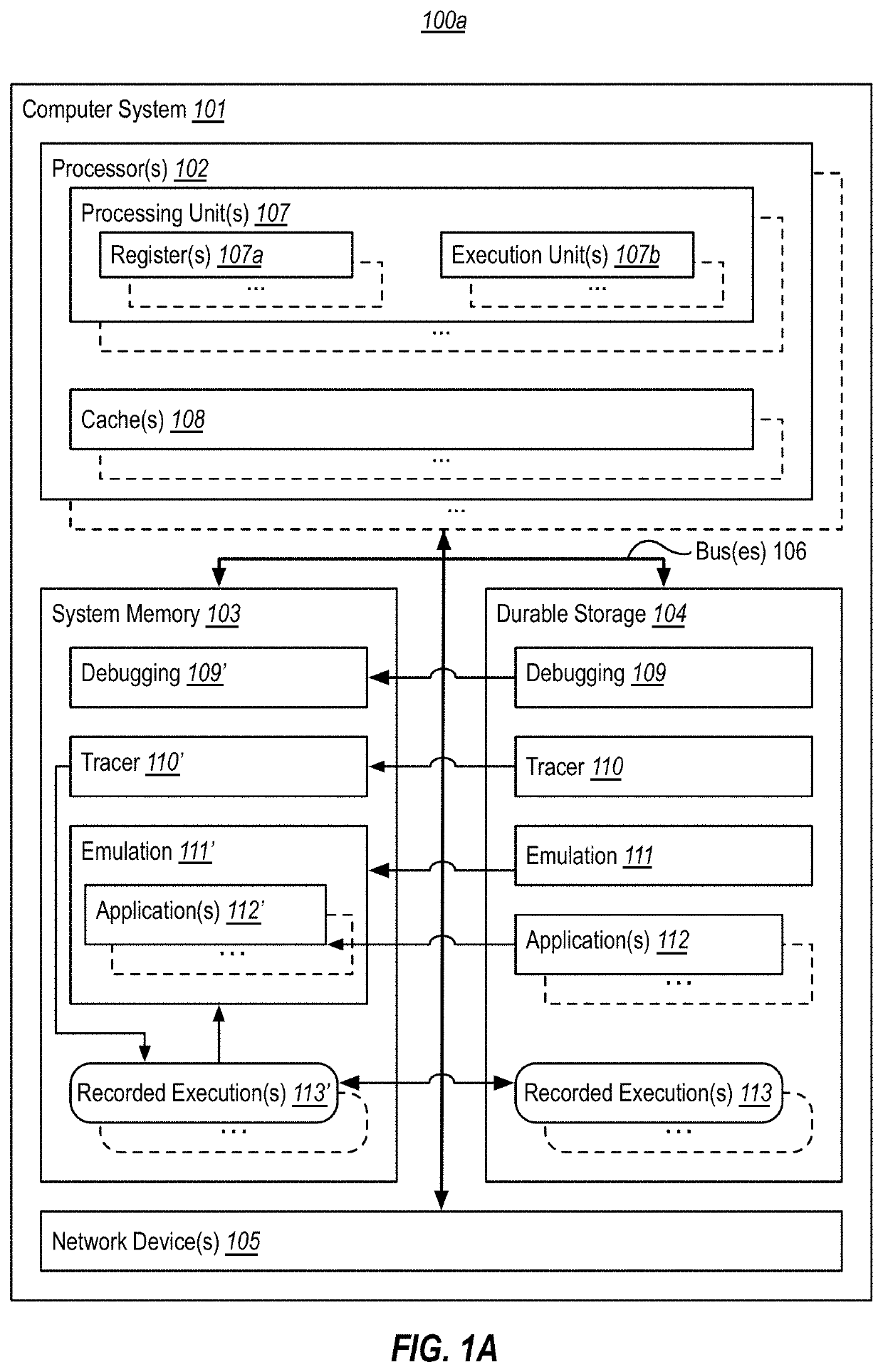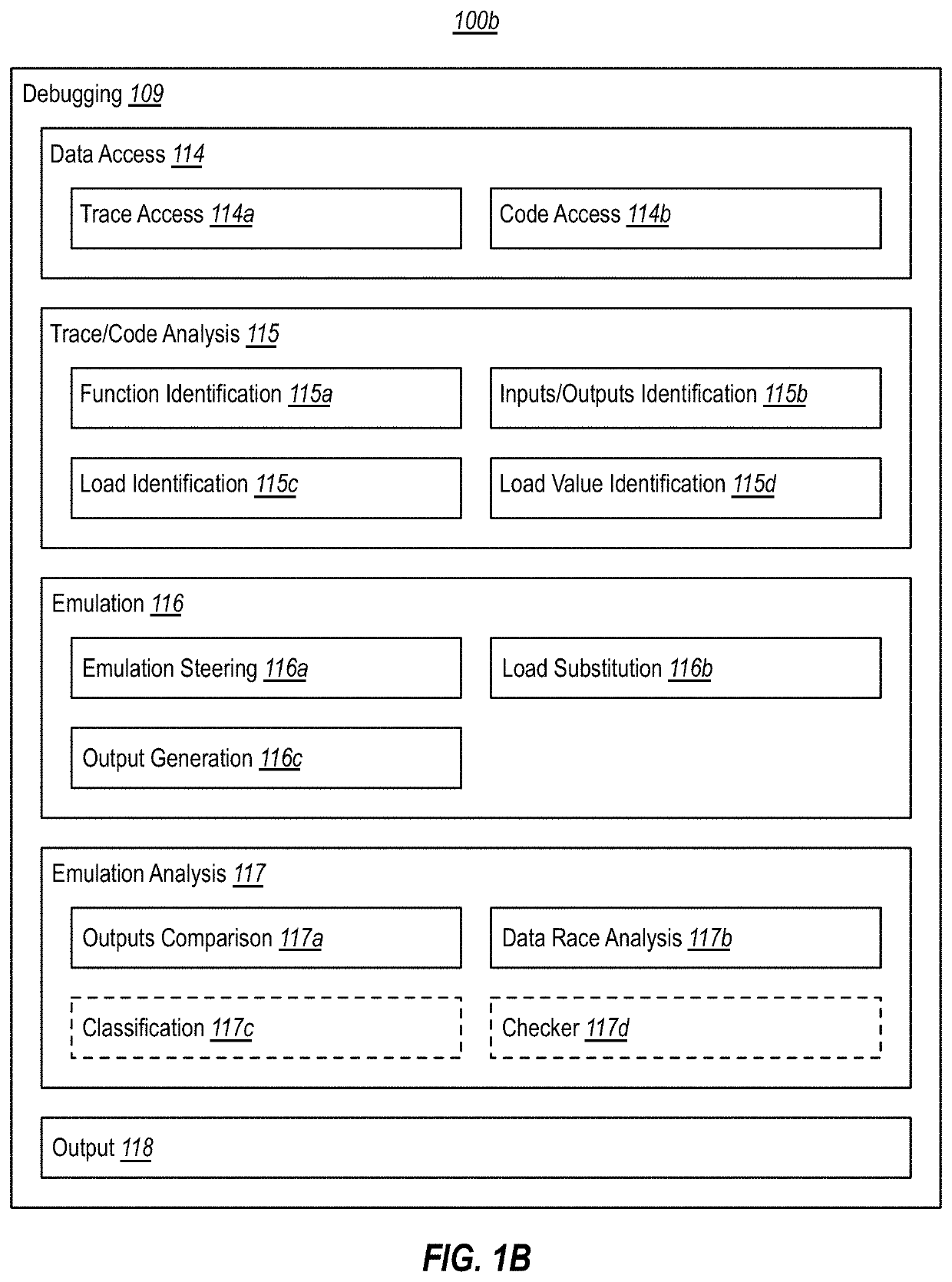Data race analysis based on altering function internal loads during time-travel debugging
a data race and function technology, applied in the field of data race analysis based on the internal load of the function, can solve the problems of slow execution performance, incorrect data, rare and seemingly random software behavior,
- Summary
- Abstract
- Description
- Claims
- Application Information
AI Technical Summary
Benefits of technology
Problems solved by technology
Method used
Image
Examples
Embodiment Construction
[0017]At least some embodiments described herein leverage historic debugging technologies to substitute the value of a load within a function during the functions' replay, in order to observe the effect of the substitution on the function's output(s). Thus, in accordance with embodiments herein, when emulating execution of a given function, an emulator is able to modify one or more memory values read by the function, and then compare the function's emulated behavior to traced behavior. In embodiments, a debugger uses this comparison to determine if a memory race occurred (or likely occurred) during tracing of the function, and / or to identify potential effects of a memory race. In embodiments, the debugger can perform this analysis whether or not a data race actually occurred during tracing.
[0018]For example, modifying the value read by a given load might operate to simulate the occurrence of a data race. Thus, the debugger can observe effects a simulated data race might have on the ...
PUM
 Login to View More
Login to View More Abstract
Description
Claims
Application Information
 Login to View More
Login to View More - R&D
- Intellectual Property
- Life Sciences
- Materials
- Tech Scout
- Unparalleled Data Quality
- Higher Quality Content
- 60% Fewer Hallucinations
Browse by: Latest US Patents, China's latest patents, Technical Efficacy Thesaurus, Application Domain, Technology Topic, Popular Technical Reports.
© 2025 PatSnap. All rights reserved.Legal|Privacy policy|Modern Slavery Act Transparency Statement|Sitemap|About US| Contact US: help@patsnap.com



